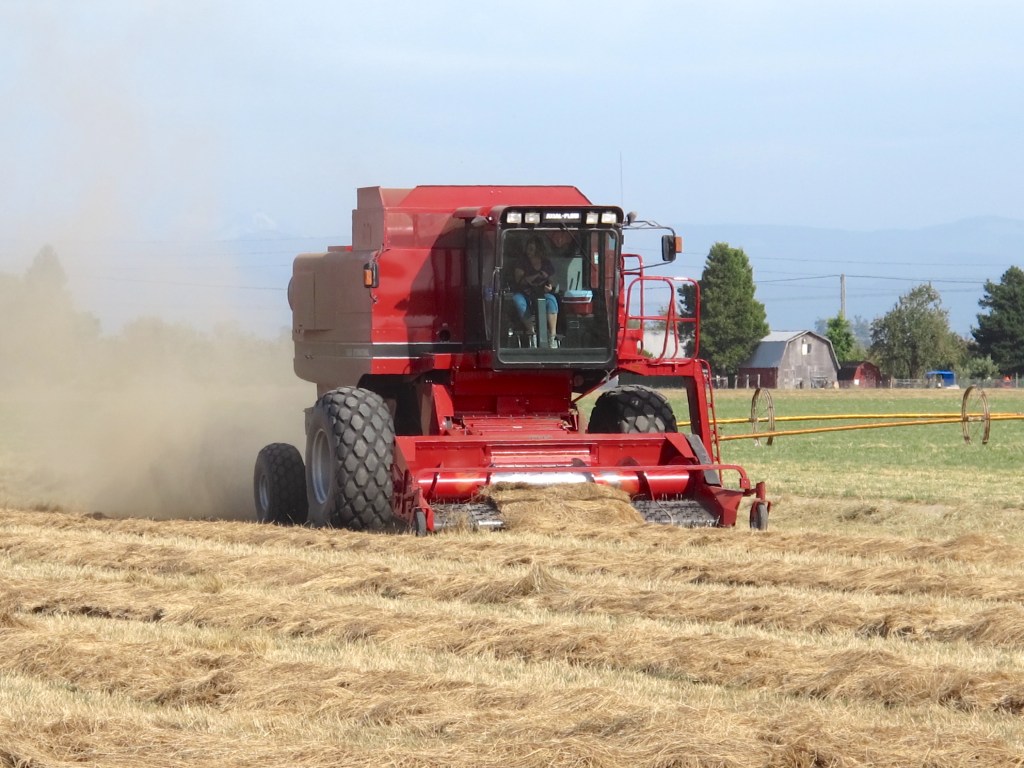Grass seed growers encouraged to account for all their costs
Published 10:51 am Tuesday, February 11, 2025

- An Oregon farmer harvests grass seed. Experts urge growers to make detailed accountings of all of their costs.
With the economics of grass seed production in dire straits, Oregon farmers may be in worse financial shape than even they realize, experts say.
Grass seed farmers are well-aware of the low prices and crop surpluses plaguing their industry, but experts warn that many are overlooking the total effects on their balance sheets.
“It’s very important for farmers to truly understand that total cost to run the farm,” said Mark Simmons, executive director of the Oregon Grass Seed Bargaining Association.
When grass seed growers don’t thoroughly account for the expenses of producing a crop, they often find themselves going deeper into debt and losing the equity in their properties, Simmons said.
“What they’re doing is mortgaging their farm away. They’re depleting the value of their farm,” he said. “That can go on until the banker shuts you down and sells the farm from under you.”
Apart from the impact to individual finances, the grass seed industry as a whole would be better off if growers took a sharper pencil to examining their production costs, Simmons said. If they had an accurate view of the situation, they might be more willing to curtail plantings or plow out fields.
“Right now, we need a lot less seed,” he said. “Don’t keep digging a bigger hole. If you’re in trouble, stop digging.”
Detailed accounting
Family farmers with few or zero employees are seldom eager to spend a lot more energy on accounting when there’s never enough time to get everything done, said Dave Sunderland, a management consultant who’s long advised farmers in Oregon’s Willamette Valley.
“When you’re doing most of the work yourself, you don’t want to spend another 20 hours a week in the office,” he said.
However, diligently tracking the “bits and pieces that make up enterprise accounting” will help farmers understand whether they’re getting a return on their investment, said Phil LaVine, a farm business consultant who’s also familiar with the region’s grass seed industry.
Such attention to detail is especially important now that grass seed prices are depressed, interest rates are elevated, and growers are having a tough time breaking even, he said. “I have fourth and fifth generation farmers calling me and asking, what are we going to do?”
Some farmers will only keep tabs on expenses at the broadest level, which is a common accounting oversight, LaVine said. For example, they know how much they’ve spent on fertilizer, but not how that expense breaks down per field and crop.
Evaluating costs at a more granular level can help a farmer realize they’re spending more money on certain grass seed fields than is worthwhile, he said.
If such accounting details are paired with soil nutrient tests, it can also allow growers to reduce their bills for certain fertilizers, such as potash, that are still sufficiently “banked” in their fields, said Bruce Ruddenklau, a farmer near Amity, Ore.
“Some of those expenses might not need to be incurred for a couple years,” he said.
The same principle should apply to fuel, irrigation, labor and the costs of land and equipment, even if the farmer owns such assets, as well as the grower’s own working hours, LaVine said. The idea is to get a complete picture of a farming enterprise’s return on investment.
If farmers overlook certain expenses, they still have a way of catching up to the operation’s overall finances, Sunderland said. For example, growers who don’t account for the cost of replacing the equipment they own will probably face greater repair and labor expenses down the road.
The ultimate result of such incomplete accounting is often a reliance on borrowed money, which has implications for succession planning, he said. “The equity is not there to satisfy multiple generations in the end.”






